原文章链接(侵删):https://bohrium.dp.tech/notebooks/9747927953
在完成分子动力学模拟之后,需要对模拟轨迹进行分析,计算径向分布函数(Radial Distribution Function, RDF)即是一种常见的分析。大多分子动力学模拟软件提供了计算RDF的功能,但往往不够灵活,也不能适应不同的轨迹格式。
MDtraj是一个用于处理分子动力学轨迹的Python包,它能够接受多种轨迹格式,将不同格式的轨迹作为统一的轨迹对象处理;同时,它也提供了许多性质计算的功能,其中就包括RDF;最后,通过使用Python代码,使得性质计算灵活了许多。
本文将先介绍RDF的计算原理,再以一段分子动力学轨迹为例,展示如何通过MDtraj计算RDF,并通过RDF计算配位数。已对RDF熟悉的读者,可跳过第一部分。
径向分布函数的计算原理
均匀分布
首先在1*1 的平面内均匀的生成若干个点,并选择(0.5, 0.5) 作为中心。现在我们想要知道,距离中心点为r 处点的数密度(后文简称为密度)。由于离散情形,实际上我们想知道的是r 到r + Δ r 这样的圆环内点的密度。可以想象,由于点的分布是均匀的,因此各处密度应该相等,并且与平均密度一致。由于面积为1,因此平均密度在数值上与点的数量相等。
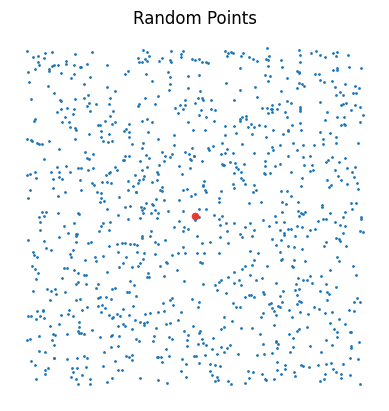
首先将各个圆环画出来
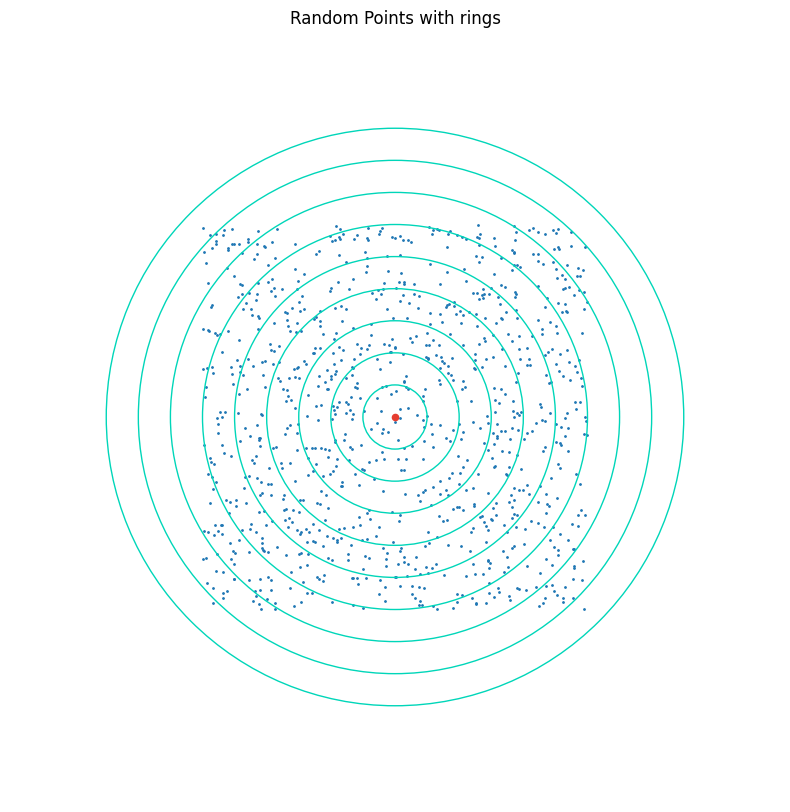
为了计算圆环内点的密度,我们只需统计各圆环内点的数量,然后将其除以圆环的面积。注意到,一个点落到哪个圆环内,只与其距中心的距离R 有关,而与方向无关,这也正是径向的含义。因此,只需计算每个点距中心的距离,并且当r ≤ R < r+ Δ r 时,对应r 的圆环内点的计数加1。numpy已经提供了类似的功能,因此这里直接使用。
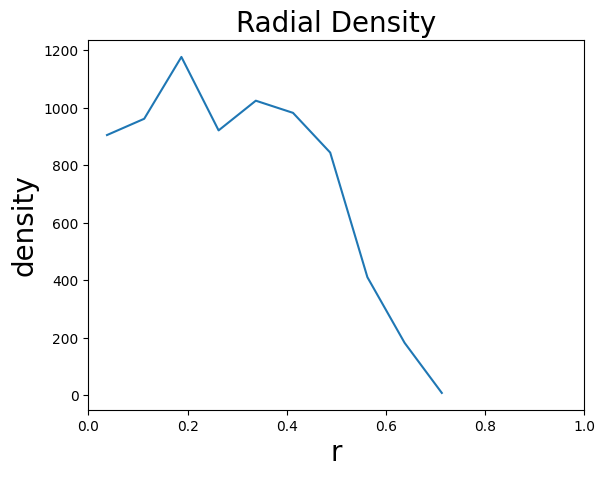
可以看见,在r < 0.5 的时候,密度接近于1000,也就是点的平均密度。而当r > 0.5 时,由于生成的点只在(0,1)的范围内,此时圆环越来越“空”,密度也快速下降。
但是,这和RDF有什么关系呢?事实上,RDF只不过是用密度再除以一下平均密度而已,g(r)=ρρ(r)
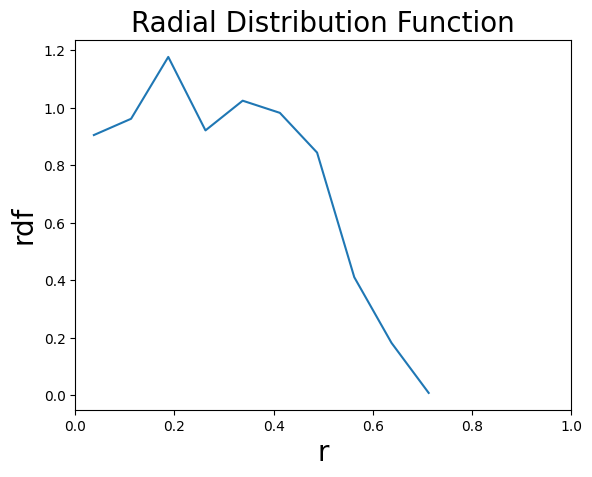
这里提供一段简短的代码,读者可自行修改点的数量与圆环的数量,观察一下它们对RDF曲线的影响。
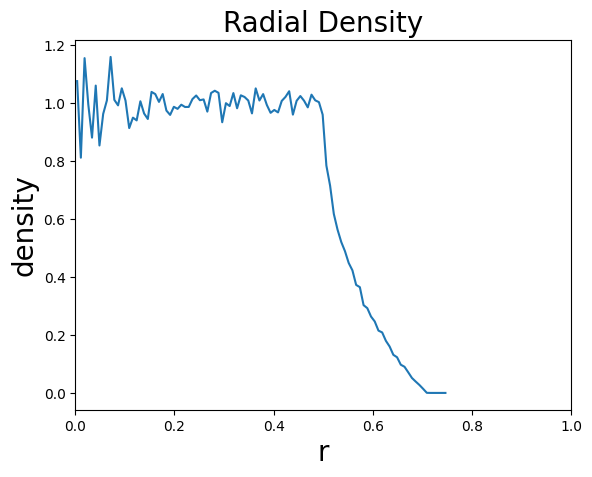
引入额外的点
均匀分布的点,其RDF平平无奇,因为任何位置的密度都与平均密度相同。让我们增加一些额外的点,让局部的密度上升,看看会发生什么。
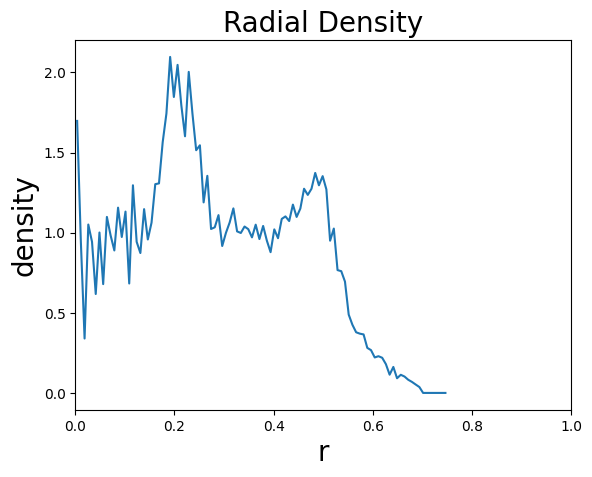
可以看见,RDF曲线上出现了两处峰,这意味着在对应的r 处,点的密度突然增大了。让我们把散点画出来,看看发生了什么。
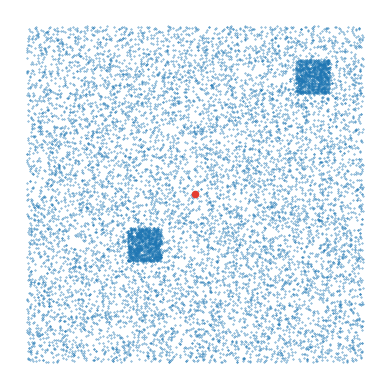
可以看见,在中心点的左下和右上方,分别有两块点密度很大的区域,RDF上的两个峰,正是对应了这两个区域的出现。这就是说,RDF可以告诉我们沿着径向密度的变化,或说包含了这部分信息,但请注意,RDF不包含方向信息,它只能告诉我们各个方向密度的平均值。
MDtraj 计算径向分布函数
基本上,计算分子动力学轨迹的RDF与前述计算RDF的方式是十分类似的,唯一不同的是,中心点通常不止一个,轨迹不止一帧。放轻松,这并不会带来更多本质上的复杂度,只不过前面的圆环在这里变成了球壳,剩下的只是按照前述的思路分别计算一帧一个中心点的情况,接着求平均值即可。
下面直接使用Mdtraj读取一段水分子的轨迹并计算径向分布函数
计算RDF
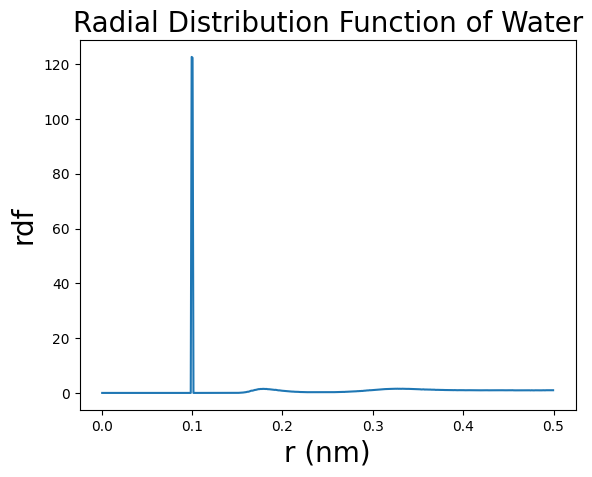
在约0.1 nm处有一个很强的RDF峰,这个峰对应这每个水分子上的氢原子(氢氧键的键长约为0.1 nm)
计算配位数
接下来我们计算一下配位数,所谓配位数,也就是距离中心原子距离r′ 以内的原子的数量。由以下公式给出 n(r′)=∫0r′g(r)∗ρ∗4πr2dr
由于RDF已经告诉了我们每一个球壳内原子的密度信息,将RDF乘以平均的原子密度ρ,就得到了球壳内原子的密度;接着乘以球壳的体积4πr2dr,就是球壳内原子的数量;最后累加一下(积分),就可以知道距离中心原子距离r′ 以内的原子的数量。
由于我们的RDF是离散的,因此将积分改为求和,并且使用以下公式计算球壳体积即可 Vn(r)=34π(r+Δr)3−34πr3=34π(r3+3r2Δr+3rΔr2+Δr3)−34πr

